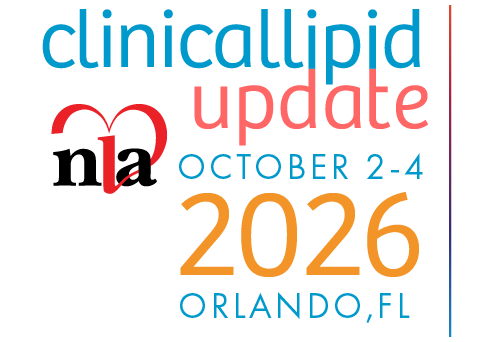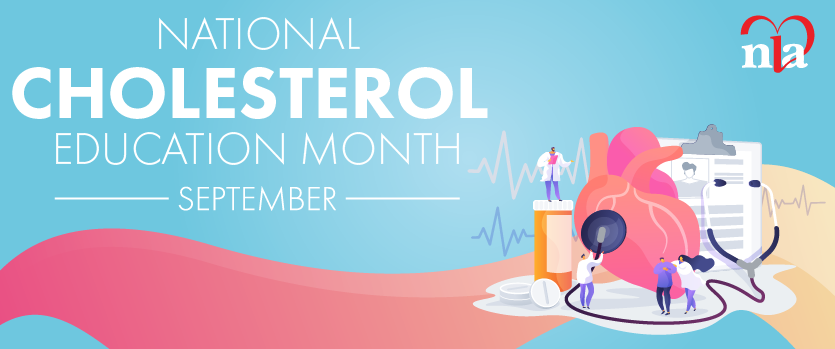Case Presentation
A 10-year-old girl was referred for elevated cholesterol. Her laboratory findings showed a total cholesterol (TC) of 364 mg/ dL, triglyceride (Tg) 65 mg/dL, high-density lipoprotein cholesterol (HDL-c) 45 mg/dL, and low-density lipoprotein cholesterol (LDLc) 300 mg/dL. She had a prior history of obesity with a body mass index (BMI) >95th %, but was otherwise healthy.

The child's 42-year-old mother was taking a statin for a TC > 300 mg/dL. The maternal grandfather had a myocardial infarction at age 44. The paternal family history is unknown.
The girl was diagnosed with heterozygous familial hypercholesterolemia (heFH). Methods to achieve a heart-healthy lifestyle were outlined, including the importance of weight management, and she was treated with atorvastatin 10 mg/daily. Follow-up labs were: TC 146 mg/dL; Tg 70 mg/dL; HDL-C 44 mg/dL; LDL-C 90 mg/dL. Her aspartate aminotransferase (AST), alanine aminotransferase (ALT) and creatine kinase (CK) were normal.
Her weight continued to increase during adolescence. Menarche occurred at 11 years of age, but her menstrual cycles were irregular. By age 17, her BMI was 30.5 kg/m2 (> 99th %) and her blood pressure (BP) was 148/88 mmHg, prompting further testing. Her fasting lipid profile showed TC 180 mg/dL; Tg 325 mg/dL; HDL-C 32 mg/dL; LDL-C 114 mg/dL. AST / ALT were mildly elevated. Thyroid function was normal. Oral glucose tolerance test (OGTT): fasting blood glucose (BG) 122 mg/dL; 2 hour 188 mg/ dL. She was diagnosed with pre-diabetes and treated with metformin 1000 mg twice daily. An angiotensin-converting enzyme (ACE) inhibitor was prescribed and she was reminded of the importance of therapeutic lifestyle modification, including the need for 5%-10% weight loss.
At the time of her most recent clinic visit, she had gained 12 Kg during the past 6 months and had missed her last two menstrual periods. Despite claims that she was not sexually active, a beta human chorionic gonadotropin (b-HCG) confirmed she was pregnant. Her atorvastatin and lisinopril were discontinued. She remained on metformin and was referred for obstetrical care.
This case represents a growing concern – one that is increasingly seen in clinical practice. Although the problems of teenage pregnancy are long-standing, the epidemic increase in childhood obesity and obesity-related comorbid conditions makes such pregnancies an even higher risk than before. Since statins are contraindicated during pregnancy, this 17-year-old’s markedly elevated LDL-C poses an additional risk factor. While this teen has several preceding and ongoing health risks, in this article we focus on the consequence of a high-risk in-utero environment on the long-term health of the fetus.
Does the mother’s pre-pregnancy weight, the amount of weight gained during pregnancy, or both, increase the risk of childhood obesity?
The mother’s pre-pregnancy weight has consistently been shown to be a strong predictor of childhood obesity.1 There was a 3.6 times increased risk among 2- to 14-year-olds whose mothers were obese (BMI > 30) prior to pregnancy versus those who were not obese (BMI < 25). Recommended weight gain during pregnancy is shown in Table 1.
 Regardless of a woman’s weight prior to pregnancy, excess weight gain during pregnancy doubles the risk of macrosomia and increases the risk of gestational diabetes (GDM), both predictors of childhood obesity.2
Regardless of a woman’s weight prior to pregnancy, excess weight gain during pregnancy doubles the risk of macrosomia and increases the risk of gestational diabetes (GDM), both predictors of childhood obesity.2
In addition to her weight status, the risk of childhood obesity varies by the mother’s race/ethnicity. Compared to non- Hispanic white women, African-American women are at higher risk of being overweight at conception, developing GDM and being less likely to breastfeed their offspring. Hispanic women also are at increased risk.
Ironically, the impact of excessive gestational weight gain may be most pronounced among mothers who are underweight prior to pregnancy (Table 2). Maternal underweight may be associated with childhood obesity if there is excess or inadequate maternal weight gain during pregnancy or rapid catch-up growth of the child during infancy and early childhood.3,4
What are the long-term consequences of maternal insulin resistance and diabetes?
Diabetes mellitus (DM) occurs in approximately 5%-10% of U.S. pregnancies (2% T1DM; 8% T2DM and 90% GDM). Although diabetic women should optimize their health prior to conception, 50% of all pregnancies are unplanned and the majority of those with diabetes have GDM; therefore, the mother’s glycemic control may be inadequate at time of conception and during the early part of her pregnancy.
Women who are overweight/obese, even if not diabetic, have more obstetrical complications in pregnancy including a higher-than-usual rate of GDM. While both obesity and GDM were found to be independently associated with adverse pregnancy outcomes, the presence of both had a greater impact than either one alone. Catalano, et al.5 observed that even small elevations in blood glucose (BG) levels in pregnancy are associated with increased maternal and fetal complications in pregnancy. Maternal glucose levels were associated with excess fetal growth and later risk of diabetes, even among women with normal glucose-tolerance tests. With each standard deviation increase in maternal BG, birth weight increased significantly and the risk of T2DM in the offspring was increased by 30%.
Does the type of maternal diabetes matter? Several studies have found that the effects of exposure to diabetes in utero on future obesity in the child are similar for pregnancies complicated by T1DM, T2DM and GDM6.
What is the association between maternal hypercholesterolemia and childhood cardiovascular disease (CVD) risk?
In addition to the genetic risk of heFH, research also has focused on the potentially toxic uterine environment attributable to maternal risk factors, including DM and hypercholesterolemia. Maternal cholesterol crosses the placental barrier and is a major substrate for the growing fetus. Compared with levels before pregnancy, total cholesterol and LDL-C are typically increased by 30%-50%. Maternal lipid levels may be altered by a variety of factors, including the mother’s health before and during pregnancy, use of medications, BMI and weight gain during pregnancy, smoking and genetics.
 Early studies found that fatty streaks were more prevalent in fetuses from hypercholesterolemic mothers and more likely to progress to atherosclerotic lesions after birth, even in offspring with normal cholesterol levels.7 Other diseases such as maternal DM and obesity alter the flux of cholesterol across the placental membrane and also increase the risk of congenital defects.8 It has been suggested that the adverse effects of maternal risk factors in the fetus may be explained by epigenetic changes attributable to DNA methylation, chromatin modifications and/or oxidative stress.9 Although statins are contraindicated in pregnant women (Class X), the bile-acid sequestrants (colesevelam, colestipol) are presumed safe (Class B), while the safety of ezetimibe, fibrates and fish oil are uncertain (Class C).
Early studies found that fatty streaks were more prevalent in fetuses from hypercholesterolemic mothers and more likely to progress to atherosclerotic lesions after birth, even in offspring with normal cholesterol levels.7 Other diseases such as maternal DM and obesity alter the flux of cholesterol across the placental membrane and also increase the risk of congenital defects.8 It has been suggested that the adverse effects of maternal risk factors in the fetus may be explained by epigenetic changes attributable to DNA methylation, chromatin modifications and/or oxidative stress.9 Although statins are contraindicated in pregnant women (Class X), the bile-acid sequestrants (colesevelam, colestipol) are presumed safe (Class B), while the safety of ezetimibe, fibrates and fish oil are uncertain (Class C).
Conclusion
The mother’s genetic background and the presence of known CVD risk factors – such as obesity, insulin resistance/diabetes and dyslipidemia – during pregnancy function as important determinates of future cardiovascular risk for the fetus. Maternal factors may be particularly strong within population subgroups at increased risk (i.e. African American and Hispanic women). The exceedingly high number of overweigh/obese women of child-bearing age, the frequency of genetic hypercholesterolemia and the increasing prevalence of insulin resistance/diabetes call for renewed awareness and aggressive management to improve the health and maintain the welfare of both the mother and her fetus. Optimizing the mother’s health prior to conception, as well as appropriate maternal weight gain, lipid levels and glycemic control during pregnancy, may help to prevent long-term adverse consequences in the offspring.
Disclosure statement: Dr. Wilson has served on the speakers bureau for Osler Institute, Advisory Board member of Aegerion Pharmaceuticals and has participated in research funding for Merck Sharp & Dohme and Novo Nordisk Inc. Dr. McNeal has no disclosures to report.






.jpg)
.png)












